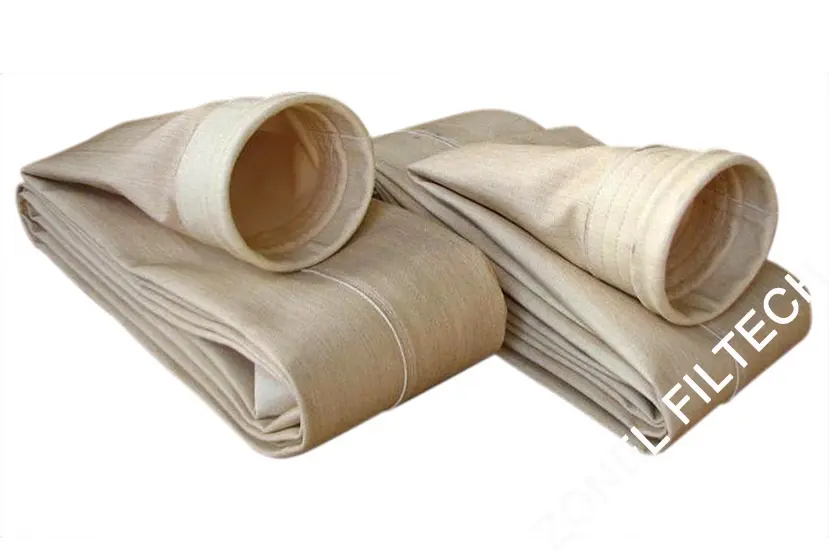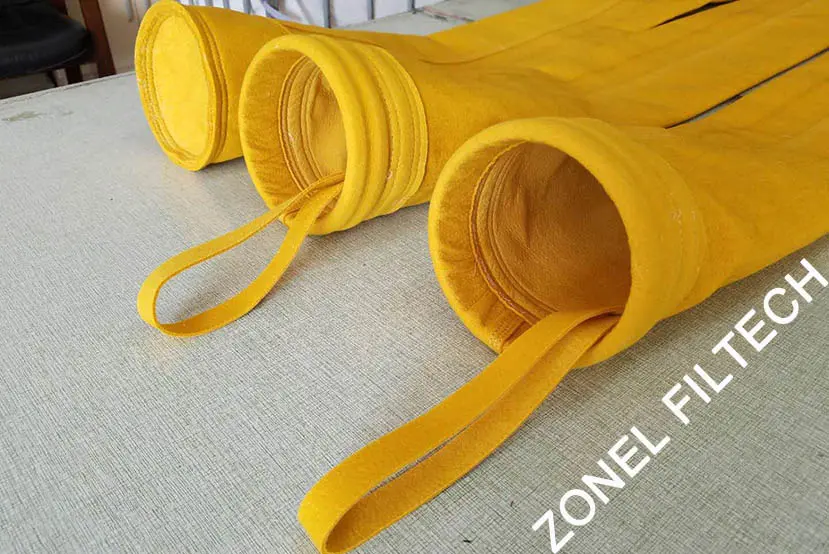In industrial environments, maintaining clean air and controlling dust is essential for both operational efficiency and worker safety. One of the most effective solutions for dust control is the use of baghouse filter bags within dust collector systems. These filter bags are essential for capturing dust particles, maintaining clean air output, and complying with regulatory standards.
However, selecting the right baghouse filter bags can be challenging given the variety of materials, designs, and specifications available. Here are seven essential tips to guide you in choosing the best baghouse filter bags for your dust collector system.

Table of Contents
ToggleUnderstand the Type of Dust
The first consideration when selecting baghouse filter bags is understanding the type of dust your system needs to capture. Different industrial processes generate different types of dust, each with unique characteristics such as particle size, shape, and chemical composition. For instance, fine dust particles from woodworking will have different filtration requirements compared to coarse, abrasive dust from metalworking.
To choose the right filter bags, analyze the dust properties. Fine dust may require a filter bag with a tighter weave or finer fibers to capture small particles effectively, while larger or abrasive particles may need more durable materials that can withstand wear and tear.
Select the Appropriate Filter Bag Material
The material of the filter bag is critical to its performance and durability. Common materials used for baghouse filter bags include polyester, polypropylene, aramid (Nomex), and PTFE (Teflon). Each material has specific properties that make it suitable for different applications:
Polyester: Known for its versatility and cost-effectiveness, polyester filter bags are suitable for general-purpose applications where temperature and chemical resistance are not major concerns.
Polypropylene: This material offers excellent chemical resistance and is ideal for environments where the filter bags may be exposed to acids, alkalis, or other corrosive substances.
Aramid (Nomex): Aramid filter bags are made for high-temperature environments, able to endure temperatures up to 400°F (204°C). They are typically used in industries like asphalt, cement, and metalworking.
PTFE (Teflon): PTFE filter bags provide superior chemical resistance and can handle high temperatures, making them suitable for the most demanding applications, including pharmaceuticals and food processing.
Choosing the right material ensures the filter bags can handle the specific conditions of your operation, enhancing their performance and lifespan.
Consider Temperature Resistance
Operating temperature is a critical factor when selecting baghouse filter bags. Filter bags must withstand the maximum temperatures they will encounter without degrading. High-temperature environments, such as those found in metal smelting or asphalt production, require filter bags made from materials like aramid or PTFE, which can maintain their structural integrity at elevated temperatures.
Using filter bags that are not rated for your system’s operating temperature can lead to premature failure, resulting in increased maintenance costs and potential downtime. Always verify the temperature resistance of the filter bag material to ensure it aligns with your operational requirements.
Evaluate Chemical Resistance
If your dust collection system deals with chemically reactive or corrosive dust, selecting filter bags with appropriate chemical resistance is essential. Materials such as polypropylene and PTFE provide excellent chemical resistance, ensuring the durability and effectiveness of the filter bags in harsh environments.
Chemical resistance is especially crucial in industries like chemical processing, pharmaceuticals, and food manufacturing, where exposure to acids, alkalis, or other reactive substances is frequent.Using chemically resistant filter bags helps prevent degradation and ensures consistent filtration performance over time.
Optimize the Air-to-Cloth Ratio
The air-to-cloth ratio, which is the volume of air passing through a specific area of filter media, is a critical factor in determining a baghouse’s performance and efficiency. An optimal air-to-cloth ratio ensures effective dust collection without overloading the filter bags, which can lead to reduced filtration efficiency and increased wear.
Determining the optimal air-to-cloth ratio for your system relies on several factors, such as the type of dust, desired filtration efficiency, and the specific design of your dust collector. Consulting with a dust collection specialist can help you calculate the appropriate ratio, ensuring your filter bags perform optimally.
Select the Appropriate Bag Design and Construction
The design and construction of the filter bag greatly impact its performance and durability.
Key factors to consider include:
Bag Length and Diameter: These dimensions should fit your baghouse and provide sufficient surface area for filtration. Longer bags offer more surface area and can improve filtration efficiency.
Seam Construction: High-quality seams are essential for preventing dust leakage and improving bag durability. Look for filter bags with reinforced seams that can withstand the stresses of operation and cleaning.
Top and Bottom Attachments: The attachments should ensure secure and easy installation in the baghouse. Common attachment styles include snap bands, flange tops, and ring tops. Select the attachment style that most appropriately suits your baghouse design.
Well-designed and constructed filter bags can improve the efficiency and lifespan of your dust collection system, thereby reducing maintenance needs and operational costs.
Evaluate Maintenance and Cleaning Methods
Regular upkeep and cleaning are crucial for preserving the efficiency of your baghouse filter bags. The cleaning method used in your baghouse—whether it’s pulse-jet, shaker, or reverse air—should match the design of the filter bags.
Pulse-Jet Cleaning: Requires filter bags with good flexural strength to withstand the cleaning pulses. The bags are cleaned by short, controlled bursts of compressed air, which dislodge the collected dust from the surface.
Shaker Cleaning: Involves mechanically shaking the filter bags to remove dust. This method requires filter bags that can endure the physical shaking without damage.
Reverse Air Cleaning: Uses reverse airflow to clean the filter bags. The bags must be able to handle the backflow without tearing or collapsing.
Understanding the cleaning method and its impact on filter bag performance helps you choose bags that are compatible with your system and easy to maintain.

Conclusion
Choosing the right baghouse filter bags for your dust collector system is critical for optimizing performance, ensuring regulatory compliance, and maintaining a clean and safe work environment. By understanding the type of dust, selecting appropriate filter bag materials, considering temperature and chemical resistance, optimizing the air-to-cloth ratio, choosing the right bag design, and accounting for maintenance and cleaning methods, you can make informed decisions that enhance the efficiency and longevity of your dust collection system.
Working with a reputable supplier and consulting with experts in industrial filtration can further ensure that you select the best filter bags for your specific application. Investing time and effort in choosing the right filter bags not only improves operational efficiency but also contributes to a healthier and safer workplace for everyone involved.
